Blog Main
Subscribe & Save 30% off your first shipment and 15% off ongoing Try now!
Blog Main
Subscribe & Save 30% off your first shipment and 15% off ongoing Try now!
Menu title
This section doesn’t currently include any content. Add content to this section using the sidebar.
Your headline
Image caption appears here
Add your deal, information or promotional text
Sign up to our monthly newsletter to get our curated collection of articles on the benefits of cold-pressed dog food, dog nutrition & wellness, and much more!
We take care of everything when it comes to our dogs' health. But certain things can catch us off guard, prompting a frantic search on the internet about what to do. One situation that may send a ripple of worry to every pet owner is if our dog accidentally consumes moldy dog food.
While it may appear harmless, consuming moldy food is risky for their health. Let’s explore some details to understand better the potential risks of consuming moldy food and how to handle this situation.
Yes, moldy food can be harmful to dogs as it contains mycotoxins. Molds produce this toxic substance in food and plant material, including cheese, bread, fruits, and dog food.
Mold mainly occurs when dog food is improperly stored or kept past its expiration date. Moisture, warm temperatures, or exposure to air can also encourage mold growth in dry kibble and wet dog food.
If your dog has accidentally eaten moldy food, you should take prompt action to ensure their well-being. Here are a few steps to follow:
If your dog has ingested something potentially harmful, you should consult a professional. You should also tell your veterinarian what type and amount of moldy food your dog consumes and how long it has been since it last ate it.
If you cannot contact a veterinarian, contact the
Animal Poison Control Center at (888) 426-4435.
You should keep a close eye on your dog and keep track of any symptoms that might appear within 24-48 hours of eating moldy food. Some common symptoms of mycotoxin poisoning may include:
In addition, a specific type of mycotoxin, aflatoxin, can affect a dog’s liver function. In such cases, you’ll notice symptoms like yellowing of the skin (jaundice), lethargy, or changes in behavior. However, these symptoms might take a few days to appear, and it might be too late for treatment.
That’s why the best action is to consult a veterinarian immediately after your dog has eaten moldy food.
While you contact your veterinarian and wait for their instructions, ensure your dog can access clean, fresh water. This will serve a dual purpose: First, it’ll help flush out toxins from the dog's body, which might help reduce the impact of moldy food. Second, it will help prevent dehydration, especially in dogs who have experienced symptoms like vomiting or diarrhea.
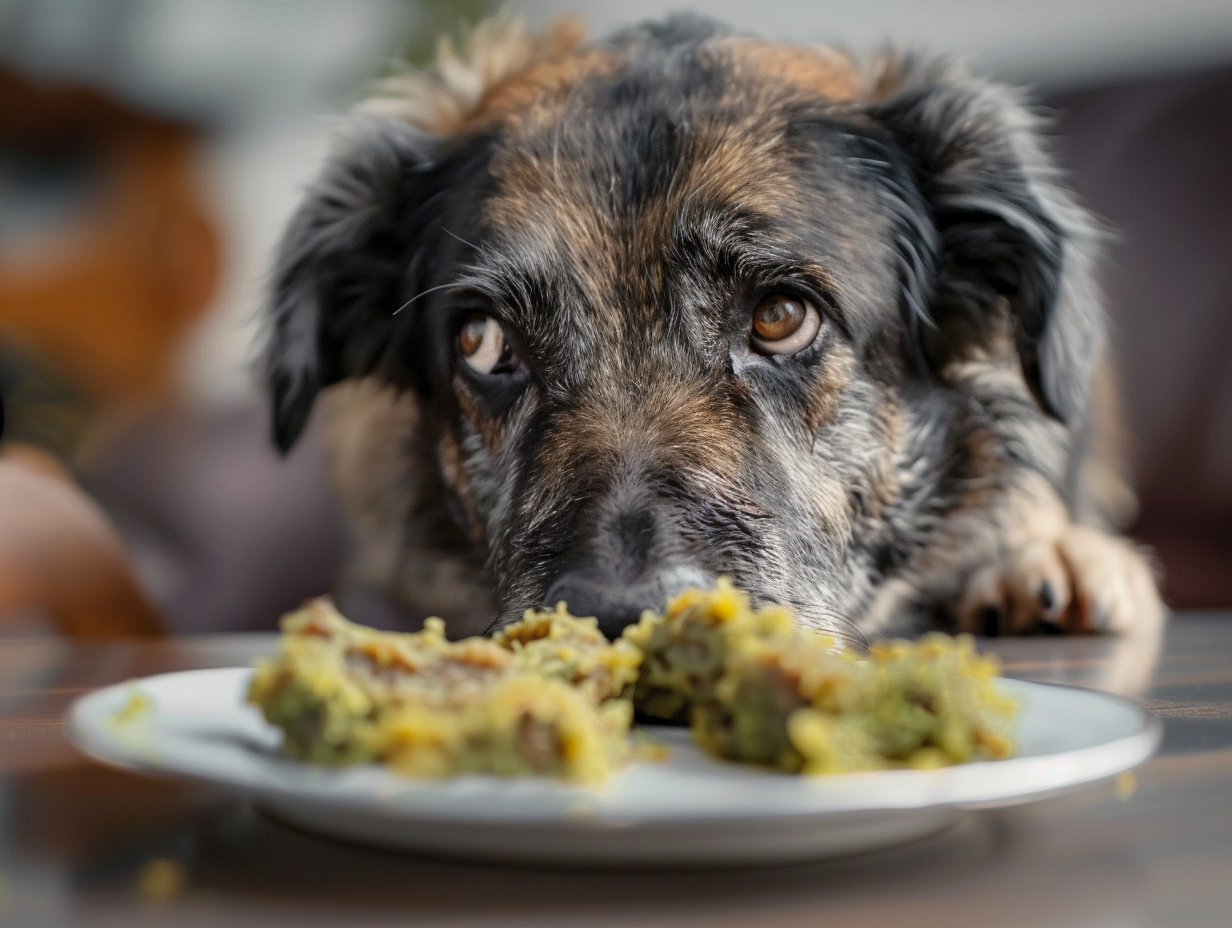
Consuming moldy food can have a severe effect on a dog’s health. That’s why taking specific proactive steps to prevent such incidents is essential. Here are some tips to help you get started:
Ensure you’re storing your dog’s food properly and adhering to the storage guidelines recommended on the product packaging. Most dry dog foods should be kept in a dry place with a cool, stable temperature. The food should be kept away from moisture, heat, and excessive exposure to air, as that can trigger the growth of molds.
Our cold-pressed dog food may last longer because your dog needs less food to feel full. Airtight containers ensure that no food goes to waste.
Check your dog’s food regularly for signs of mold. If you notice unusual colors, odors, or textures, discard the food immediately.
Also, keep track of the food's expiration date, especially if you store it in a separate container rather than its original packaging.
Keep the trash cans in your home closed and secured to prevent your dog from scavenging for moldy or spoiled food. You can keep the trash can in a place that is less accessible to your dog and use childproof latches on the cabinet that holds it.
If you are disposing of something hazardous for your dog, try to use a secure outdoor trash can that is out of their reach.
Be mindful of the places where you take your dog for walks. They might be tempted to explore places where trash is stored and consume potential hazards like moldy food or discarded items, which could pose a health risk.
Use positive reinforcement techniques such as verbal praises and treats as rewards to teach your dog various commands, especially "leave it" or "drop it." These will help discourage them from picking and consuming anything that can harm their health.
Schedule regular veterinary check-ups to monitor your dog's overall health and well-being. This will help you address dietary concerns and get professional advice to prevent unforeseen health issues.
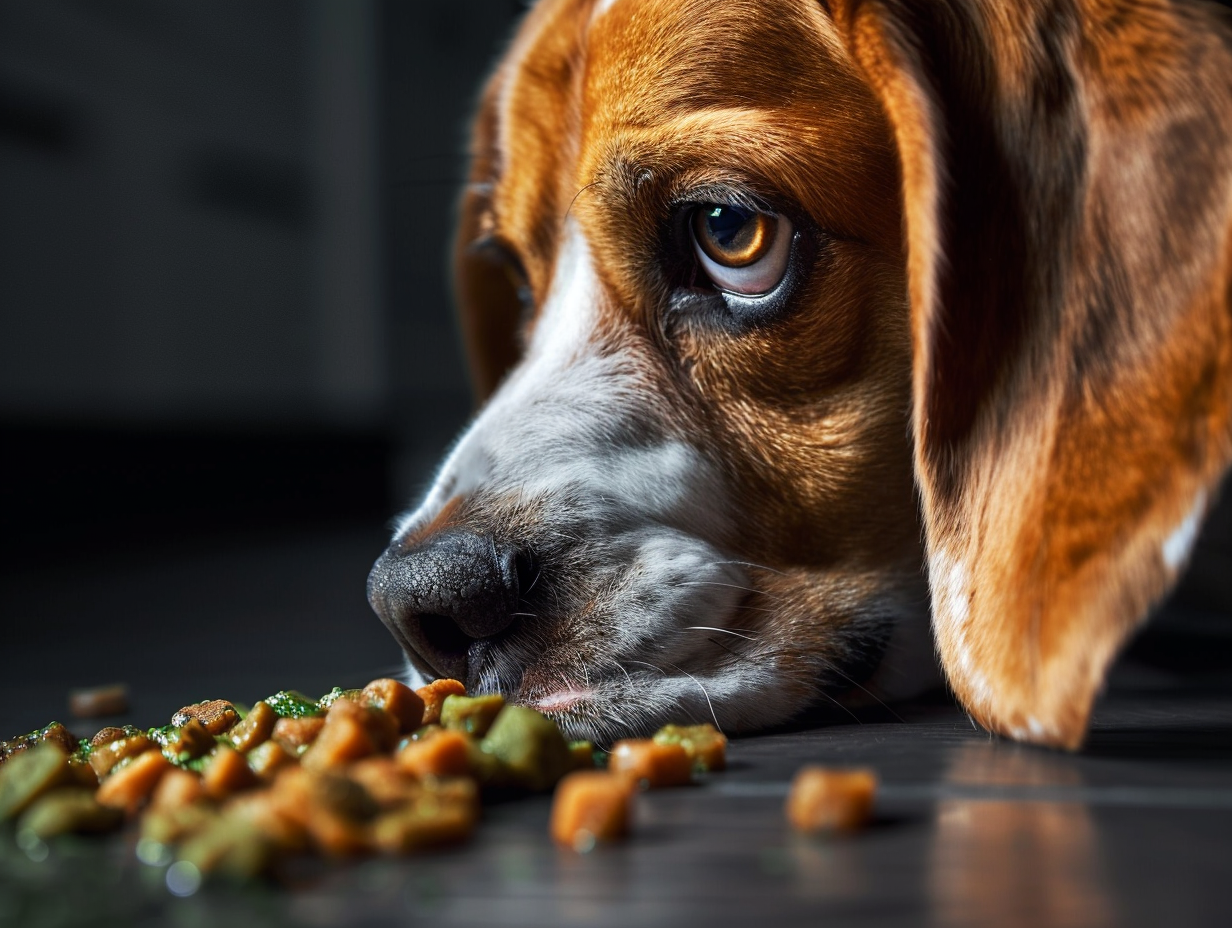
Moldy food can cause severe problems for dogs. Therefore, as responsible pet owners, we want to take every precaution to store their food correctly and regularly inspect the meals for any signs of mold.
If a dog accidentally eats moldy food, you should take prompt action to prevent unforeseen circumstances. We recommend contacting a veterinarian or the Animal Poison Control Center immediately.
Let’s answer some frequently asked questions about a dog’s health and moldy dog food:
Yes, dogs can get sick from eating moldy dog food, as the mold may contain mycotoxins. These toxic substances can lead to various health issues in dogs.
If your dog has eaten moldy food, consult a veterinarian immediately. They’ll advise you on how to handle the situation based on what type and amount of moldy food your dog consumes.
You might start noticing symptoms of mycotoxin poisoning caused by eating moldy food within 24-48 hours. The initial symptoms may include vomiting, diarrhea, agitation, lethargy, tremors, incoordination, seizures, loss of appetite, abdominal pain, and fever.
However, a specific type of mycotoxin, aflatoxin, can take a few days to show the first symptoms. That’s why it’s recommended that you consult a veterinarian immediately after your dog has eaten moldy food.
Did the vet mention giving your dog a Bordetella shot, you may be wondering what that is. The confusion is understandable. We care so much about our dogs that an unfamiliar term like “Bordetella” can spark concern.
But don’t worry - we’ve got your back.
This article will explain everything you need to know about Bordetella and how it affects a dog. We’ll cover various topics, including what Bordetella is, its symptoms, and the importance of its vaccine. This information will help you decide about your dog’s health and well-being.
In simple terms, Bordetella is a type of bacteria that can cause respiratory infections in various species. It is also known more commonly as “kennel cough.” Bordetella bronchiseptica is the primary species of this bacteria and is explicitly associated with respiratory issues in dogs.
This bacteria is spread through airborne droplets, direct contact with infected animals, or contaminated environments. That’s why it’s more common in kennels, dog parks, grooming facilities, boarding facilities, daycares, etc.
The likelihood of a dog catching an infection by this bacterium increases under certain conditions, including:
It’s also important to note that humans can't contract Bordetella from dogs. However, since the bacteria can stay on surfaces, there’s a risk that we can transmit this bacteria from one infected dog to another. Taking proper precautions, like regularly washing and disinfecting our hands and surfaces that dogs frequently interact with can help stop the spread.
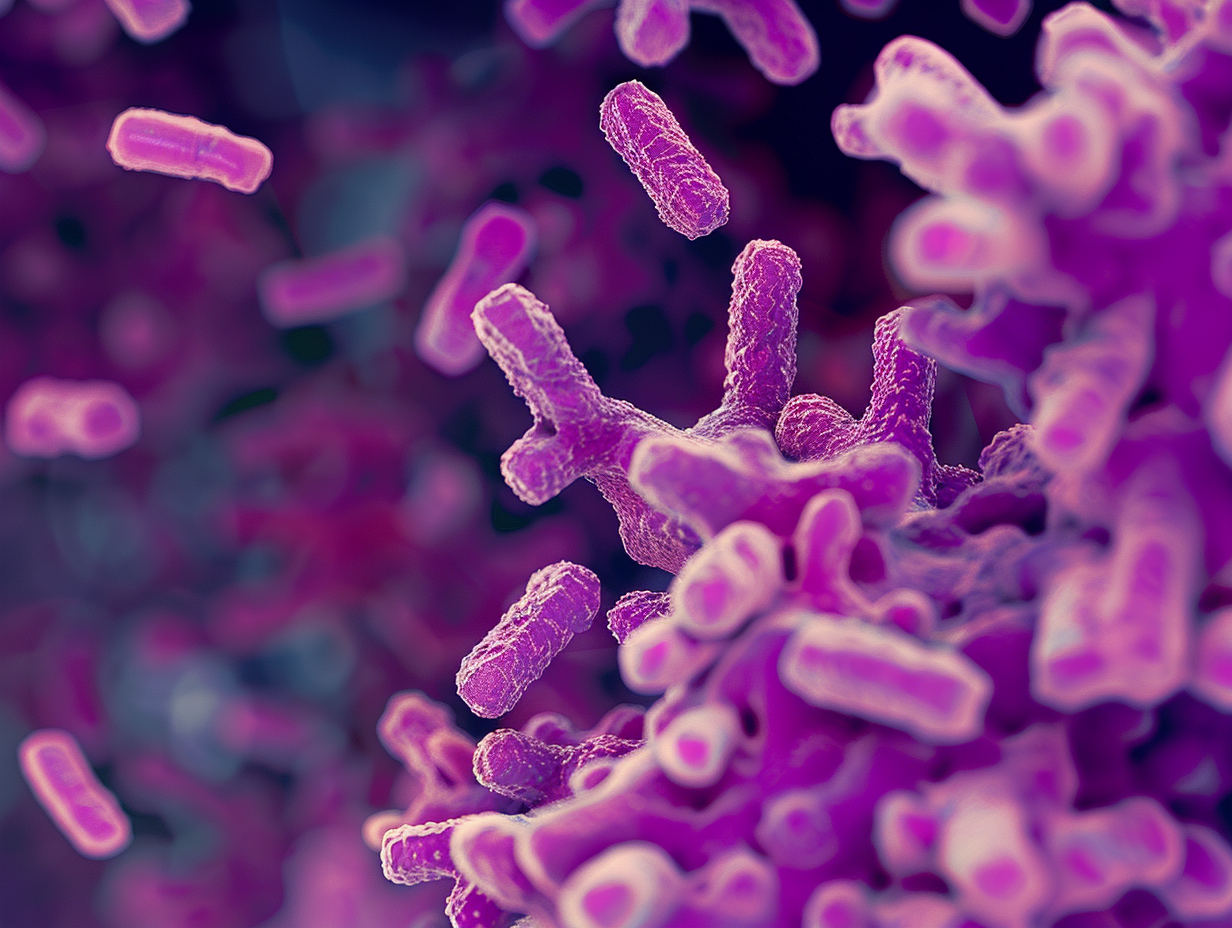
The most common symptom of Bordetella bronchiseptica is persistent coughing that sounds similar to honking. This cough is loud and harsh because it irritates the respiratory tract. It often differs from a regular cough, but the exact sound can vary among dogs.
Apart from that, some other clinical signs can accompany this respiratory infection. These may include:
You should consult a veterinarian if your dog shows any of the above signs of a respiratory infection. Also, in such cases, it is advised to avoid taking your dog to parks or other public places until they are correctly diagnosed to prevent the spread of this infection to other dogs.
Despite being highly contagious, respiratory infections caused by Bordetella are treatable. In fact, in the case of a healthy dog, the symptoms can even resolve on their own within a few weeks. Nevertheless, you should visit a veterinarian if you suspect any problems with your dog’s health.
This is especially important if you have a dog with a weakened immune system, a puppy, or an older dog. These dogs typically need extra attention and proper care to fight against Bordetella.
You should also contact your vet in advance or before visiting so that they can prepare for the visit and take necessary precautions to prevent the spread of Bordetella.
A Bordetella vaccine is your best bet to protect your dog against the infection caused by this bacteria. This preventive measure will significantly reduce your dog's risk of contracting the illness, ensuring their well-being.
If you’re unsure when or if your dog needs this vaccine, talk to your veterinarian. They can better advise you based on your dog’s lifestyle and health condition.
You can also take the following preventive measures to protect your dog against Bordetella:
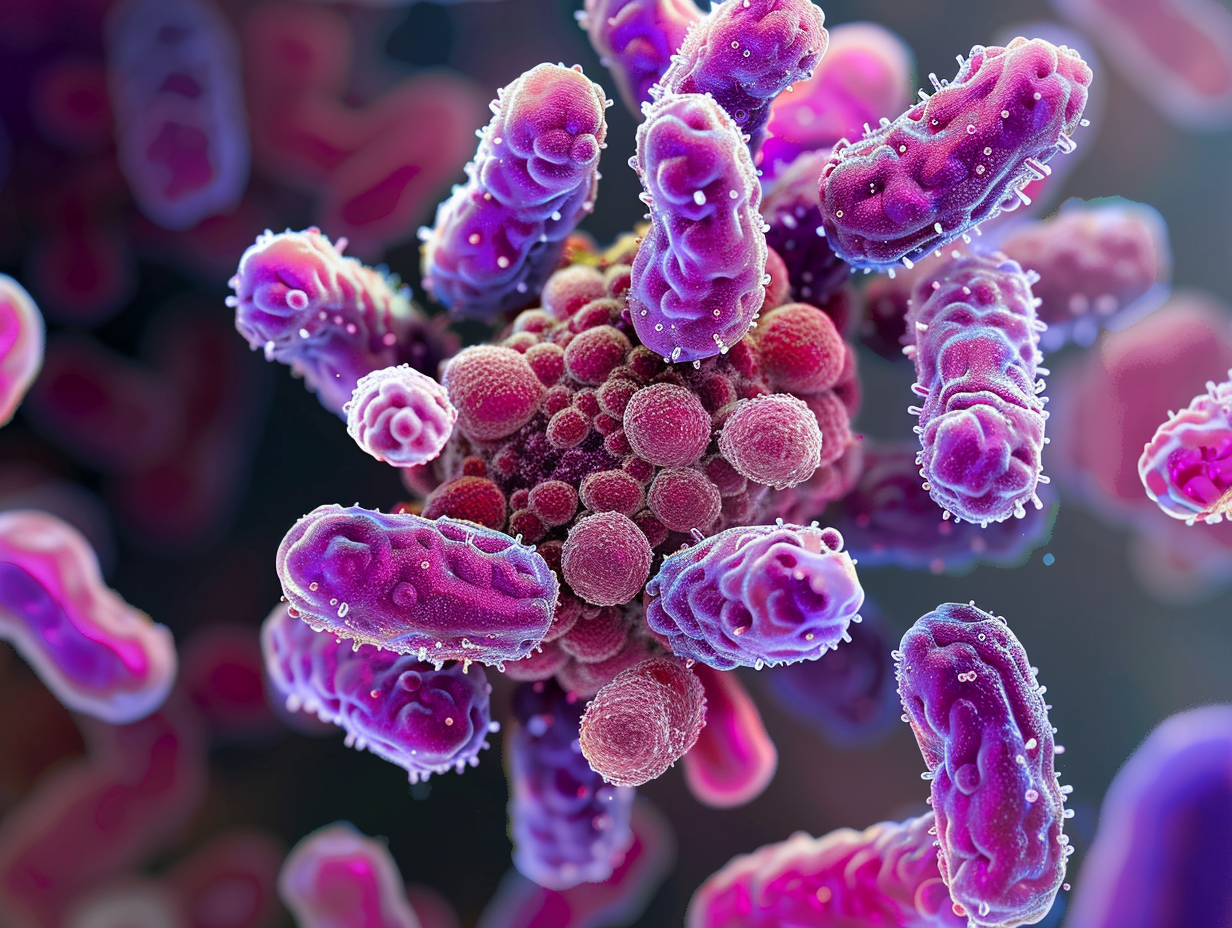
Bordetella, also known as kennel cough, is a common and highly contagious bacteria that leads to respiratory infections in dogs. It can spread through airborne droplets, direct contact with infected dogs, or contaminated environments.
However, you can take preventive measures, including vaccinations, to reduce your dog's risk of contracting this infection. This is especially important if you have a dog with a weakened immune system, a puppy, or an older dog who needs extra care.
Remember that respiratory infections caused by Bordetella are treatable, but you should visit a veterinarian to ensure your dog gets proper treatment.
Let’s answer some frequently asked questions about Bordetella in dogs:
Bordetella is a type of bacteria, with Bordetella bronchiseptica being the primary species. It’s known for causing respiratory infections in dogs.
Bordetella is highly contagious and can spread through airborne droplets, direct contact with infected dogs, or contaminated environments. It’s common in places where dogs gather closely, such as kennels, dog parks, grooming facilities, boarding facilities, and daycares.
The Bordetella vaccine protects dogs against respiratory infections caused by Bordetella bronchiseptica. It’s a preventive measure that significantly reduces their risk of contracting the illness.
You should consult your veterinarian to know more about this vaccine and its importance. They’ll help you determine whether your dog needs it based on their lifestyle and health condition.
Yes, Bordetella in dogs is treatable. In fact, in a healthy dog, the symptoms can even resolve independently within a few weeks. Nevertheless, it’s always advisable to visit a veterinarian if you suspect any problems with your dog’s health. This is especially important if you have a dog with a weakened immune system, a puppy, or an older dog that needs extra care.
Have you ever found your dog's food under its blanket? You're not alone. This common dog behavior can leave pet parents confused and curious.
In this article, we will decipher this behavior by discussing the seven most common reasons a dog might cover his food with his blanket. We’ll also share some insights and practical solutions on how to deal with this behavior.
Let’s dive right in.
Below, we have listed seven common reasons why a dog might cover their food with a blanket:
The act of hiding food with a blanket can be part of a dog's instincts. Their wild ancestors used this survival strategy to protect the food from other potential scavengers and to save it for the future.
Our domestic dogs don’t have problems where they need to save or protect their food, yet their instincts remain the same.
If your dog is hiding food with a blanket out of instinct, you should support this behavior, as your dog is simply expressing itself. You can give your dog a quiet and secure space to enjoy its food, even if it wants to do it by hiding it with a blanket.
If a dog isn’t hungry, they might cover the food with a blanket to save it for later. It is also related to their instincts, as their ancestors used to stash food away for future use.
In modern times, this simple act can be a personal preference, as some dogs prefer to eat a little at a time throughout the day—commonly referred to as grazing. If your dog isn’t typically a grazer, it could indicate other problems. If your dog shows a lack of hunger, it may be a symptom of an underlying health condition.
If your dog’s appetite is reduced, it is recommended that you visit a veterinarian. They will examine your dog to determine if there is any underlying health problem.
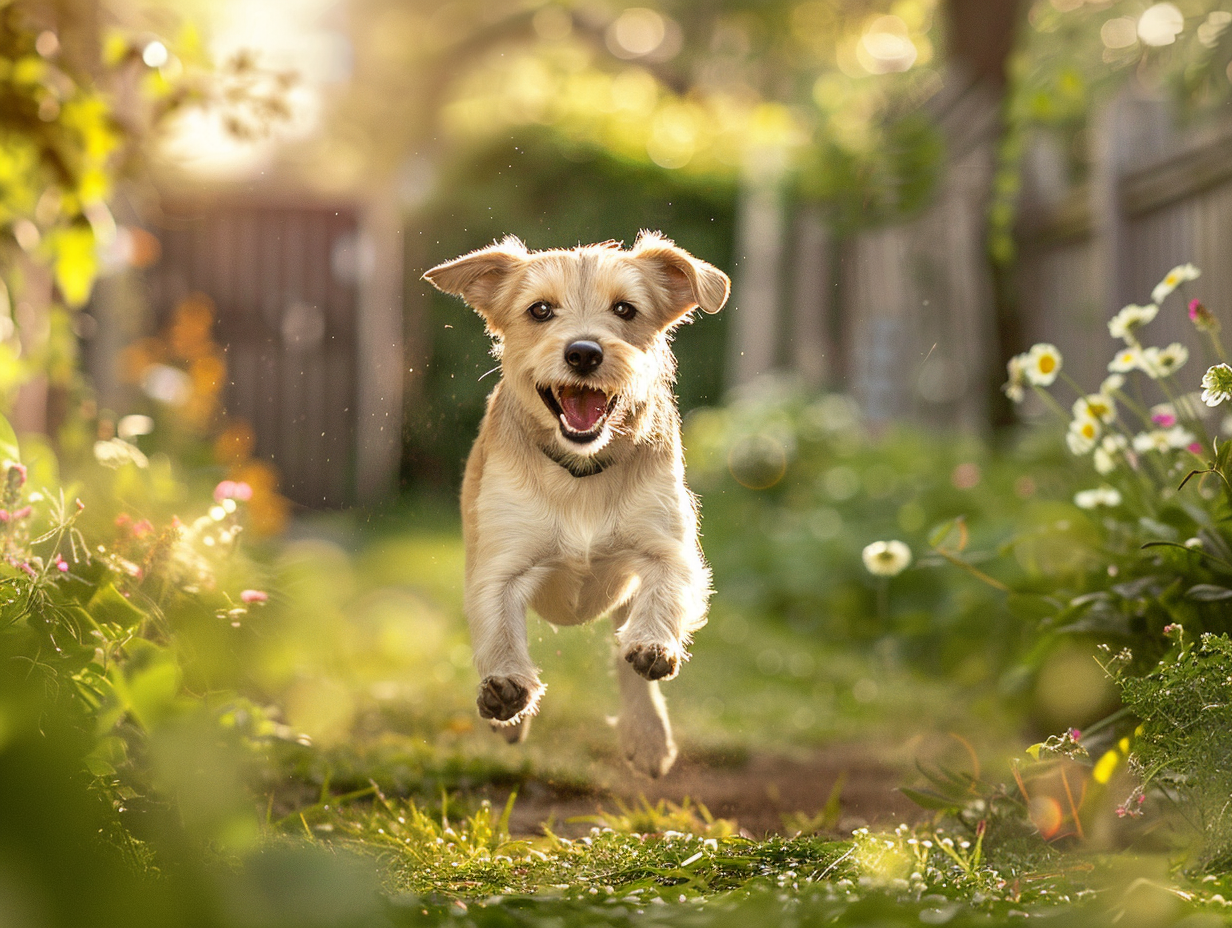
Another reason your dog might be covering their food with a blanket could be because they’re playful. It might be a fun hide-n-seek game for them where they want to hide their food.
They can do this if they’re bored or lack sufficient physical and mental stimulation. This behavior allows them to use excess energy while playing a fun game.
Ensure you add enough activities to your dog’s routine to keep it physically and mentally busy. These can include regular walks, interactive play sessions, puzzle toys, training exercises, and new toys to prevent boredom.
Dogs can become possessive, which leads them to protect their resources. This is common in households with multiple pets.
If your dog perceives a threat to their food, they might try to hide it with a blanket. It isn’t particularly harmful behavior, as they are just trying to assert control and safeguard valuables.
Understanding and managing a dog’s possessive behavior can prevent potential conflicts. To encourage sharing and cooperation among your pets, you can implement positive reinforcement training and create designated feeding areas for each pet.
However, if the problem worsens, consider consulting an animal behaviorist.
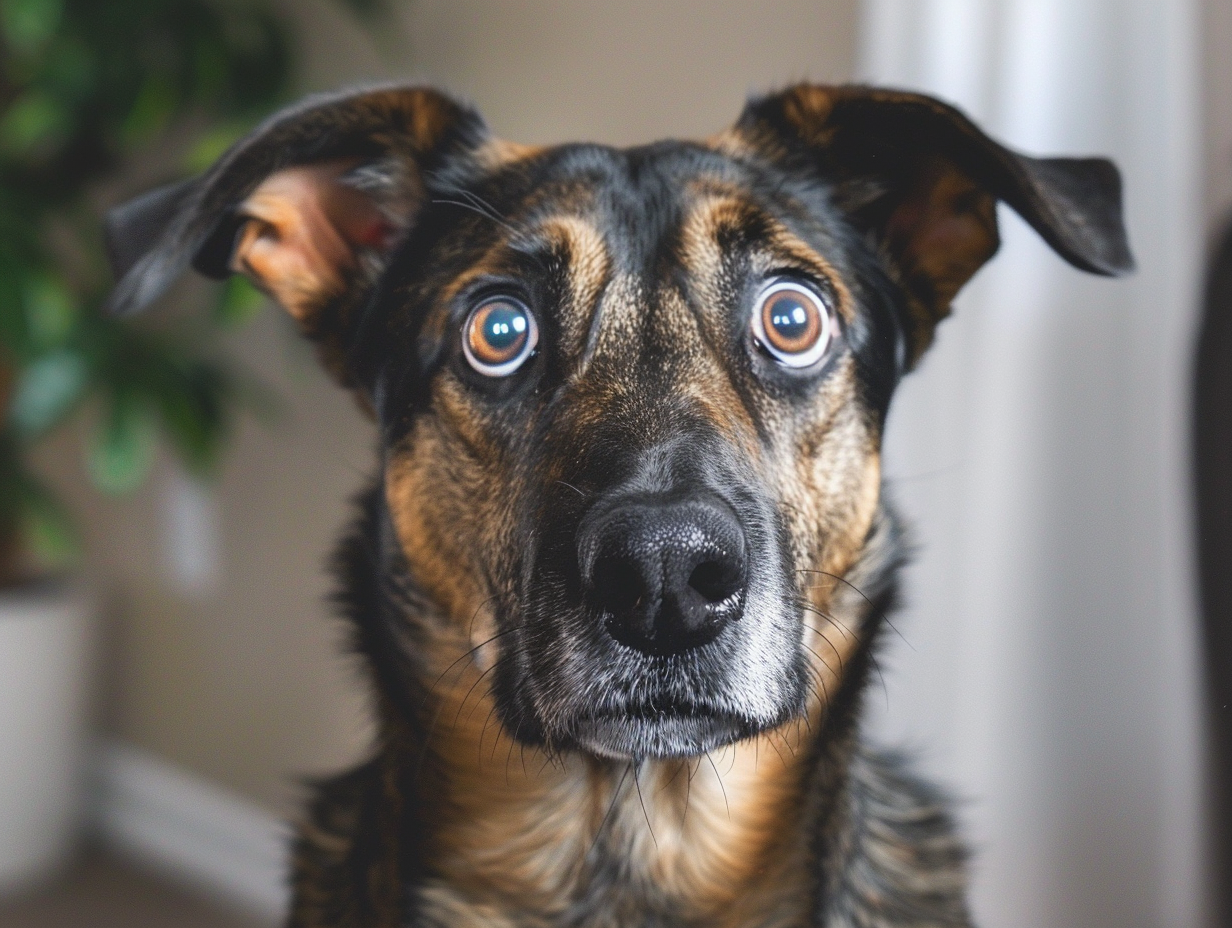
Anxiety is another emotion that can make your dog hide food with a blanket. Your dog may exhibit this behavior to cope with its feelings. The simple act of hiding food or finding a secure space to enjoy its meal can give it a sense of control and security.
If your dog recently had a traumatic experience, like moving to a new place or meeting new people, it could be causing the anxious behavior. Other signs could include excessive barking, whining, changes in appetite, trembling, and digestive distress.
When dealing with a dog’s anxious behavior, it is recommended that you create a safe and supportive environment. Try to maintain a consistent routine, use positive reinforcement techniques, create a designated mealtime space, and keep the dog engaged in various physical and mental activities.
If the problem continues, you can consult a veterinarian or an animal behaviorist.
Dental problems are quite common in dogs, and they usually lead to discomfort or pain when chewing. As a result, a dog might seek alternative ways to deal with their food, like covering it with a blanket. This will allow them to save the food for later when they feel more comfortable eating. It can also mean your dog is looking for a softer surface to consume the food.
In such cases, your dog will likely exhibit other signs of dental problems, including bad breath, lack of appetite, swollen gums, and excessive drooling.
If your dog has dental problems, consult a veterinarian. They can diagnose the specific issues and recommend an appropriate course of action.
Proper oral hygiene is suggested as a preventative measure for your dog. This includes regular tooth brushing, chews, water additives, and dental check-ups.
If you’re busy with chores, your dog might try to get your attention with quirky behaviors like covering their food with a blanket. Your dog is just trying to say, "Look at me; I'm here, and I could use some of your attention!"
Dogs often pick up on our reactions, and if they notice that a certain behavior gets them attention or interaction, they might continue doing it. That’s why the best course of action is not to make a fuss about it, especially if it’s harmless and doesn't interfere with their well-being.
It is recommended to first understand the reason behind your dog's behavior to decide whether or not to intervene. If you can determine that your dog is covering their food out of natural instinct and it’s not interfering with its health, then there isn’t any significant harm is allowing your dog to continue this behavior.
However, if you suspect your dog is acting this way due to an underlying issue, such as dental problems or anxiety, you should address the root cause. You can look for some accompanying signs or symptoms or consult a veterinarian for help.
If you have established that your dog is healthy but still covers his food, you can explore additional strategies to manage or redirect this behavior. Below are some tips you can consider:
If, even after doing everything, your dog continues to cover and hide his food with his blanket, you can consult with an animal behaviorist to better understand and train your dog.
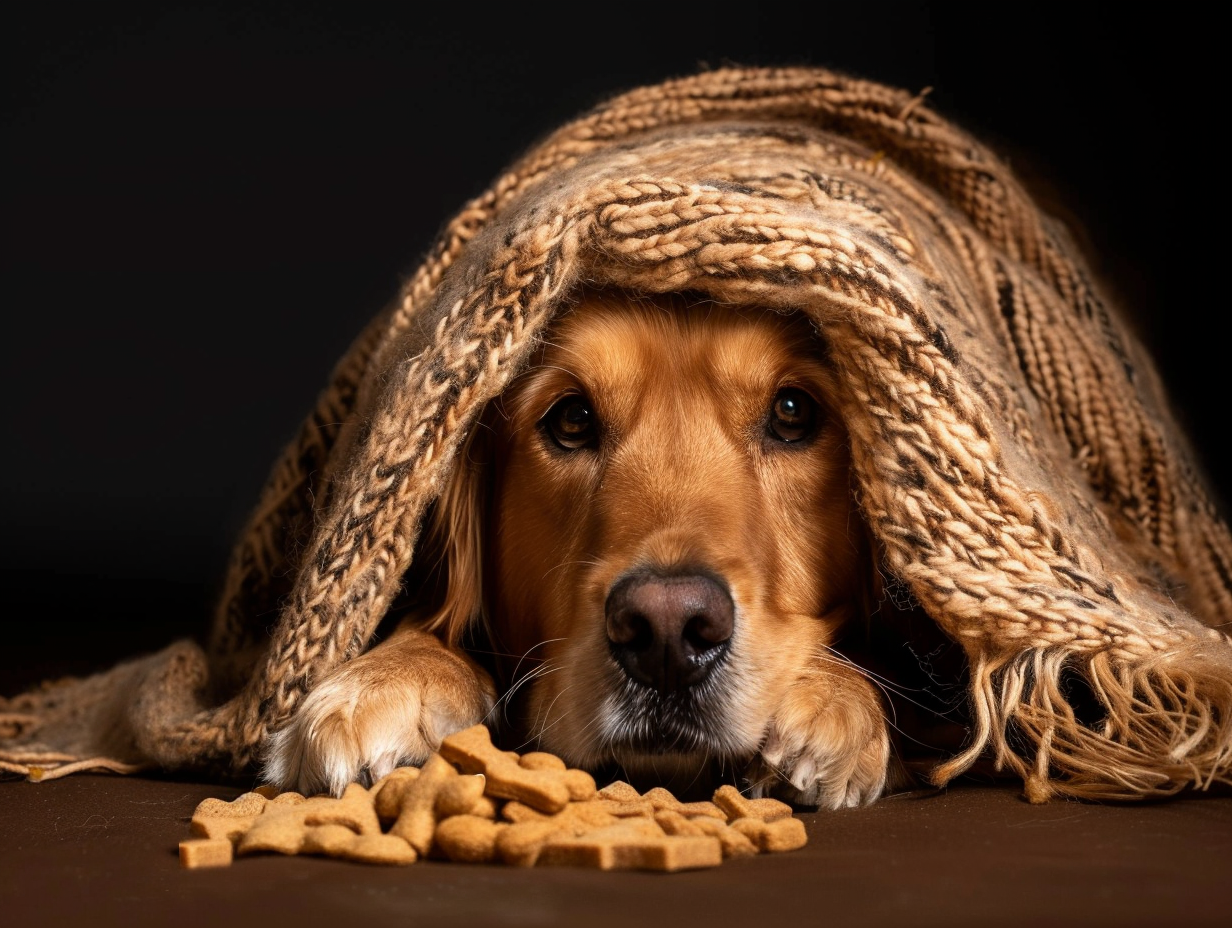
The act of covering the food with a blanket can have several implications. It could happen because your dog’s wild ancestors used a similar survival strategy of concealing their food to protect it from other potential scavengers. Or it could be a sign of an underlying issue such as dental problems, anxiety, overfeeding, or a desire for attention.
Ultimately, you want to consider the specific reason behind this behavior to determine the appropriate action. If this appears instinctual, you can let it be; otherwise, you need to address the root cause of this behavior.
Also, consider consulting a veterinarian or animal behaviorist if you’re worried about your dog covering his food with his blanket.
Let’s answer some frequently asked questions about a dog’s behavior:
A dog might cover their food with a blanket for various reasons, ranging from instinctual behaviors inherited from their wild ancestors to simple, playful behavior meant to seek your attention. However, in some cases, it can also be a sign of an underlying health condition, such as dental problems, anxiety, or overfeeding.
Ultimately, you should understand the specific reason behind this behavior to determine the appropriate action.
Your dog covering their food with a towel could be similar to covering their food with a blanket. It could be an instinctual behavior or a sign of an underlying health condition, such as dental problems, anxiety, or overfeeding.
It can also be their way of getting your attention so you can play with them.
It depends on why your dog is covering its food with a blanket. If it’s because of its instincts and is not interfering with its health, then it is fine to allow it to continue this behavior.
However, if you suspect this behavior is linked to an underlying issue, such as dental problems or anxiety, you should seek professional guidance to address the root cause.
You should start to worry about your dog’s behavior when other concerning signs, such as a change in appetite, distress, excessive whining, lethargy, digestive upset, etc., accompany it. You also should to be careful when the covering behavior becomes extreme, as that might interfere with the dog's appetite and overall well-being.
Consulting a veterinarian or animal behaviorist will help identify and address potential issues.
A dog’s behavior can be a never-ending mystery for pet parents. Every little quirky habit they have can make us curious about how their minds work. But one such habit of burying their food is simply annoying.
Why do dogs bury their food? The reasons below might surprise you.
Below, we have discussed the seven most common reasons why dogs bury their food:
Dogs have an instinct to hide food, which may be deeply rooted in their evolutionary history. Their ancestors used to bury food to hide it from other potential scavengers and save it for future periods of scarcity.
Though our domesticated companions do not face these challenges, they still have a similar instinct to hide food and toys.
If your dog is not hungry, they might bury its food to preserve it for later. This can be a sign that your dog is managing their resources or a sign of potential issues like overfeeding or a decreased appetite.
In such cases, if you’re in any doubt, you can consult a veterinarian to check if you’re feeding your dog correctly.
Burying food can also be a coping mechanism in response to anxiety or stress. If your dog has recently had a traumatic incident or is in a new home around new people, it might struggle to manage its emotions. However, burying food may help your dog feel more in control and secure.
If you suspect your dog is anxious, work to provide them with a calm and reassuring environment, and you can seek guidance from a veterinarian.Sometimes, dogs bury their food simply because they have nothing else to do. When they lack any form of entertainment or mental stimulation, they can resort to burying to entertain themselves and use their excess energy.
Adding adequate mental and physical activities to your dog's routine can be beneficial to keep them happy and occupied.While most dogs instinctively bury food, some breeds, such as Terriers, Basset Hounds, Beagles, and specific working breeds, may display a stronger inclination toward this behavior.

Burying food shouldn’t be considered bad behavior, but you should pay attention to the circumstances when they bury their food to understand the context of the situation.
Additionally, it is recommended to use positive reinforcement to deal with any behavior issues in your dog. Avoid yelling or punishing them, as it can make the situation worse. Instead, try these precautions to prevent your dog from burying food:
Remember that each dog is unique, and their reasons for burying food can also be unique. You should observe their behavior or consult with an animal behaviorist to better understand why they behave in a certain way.
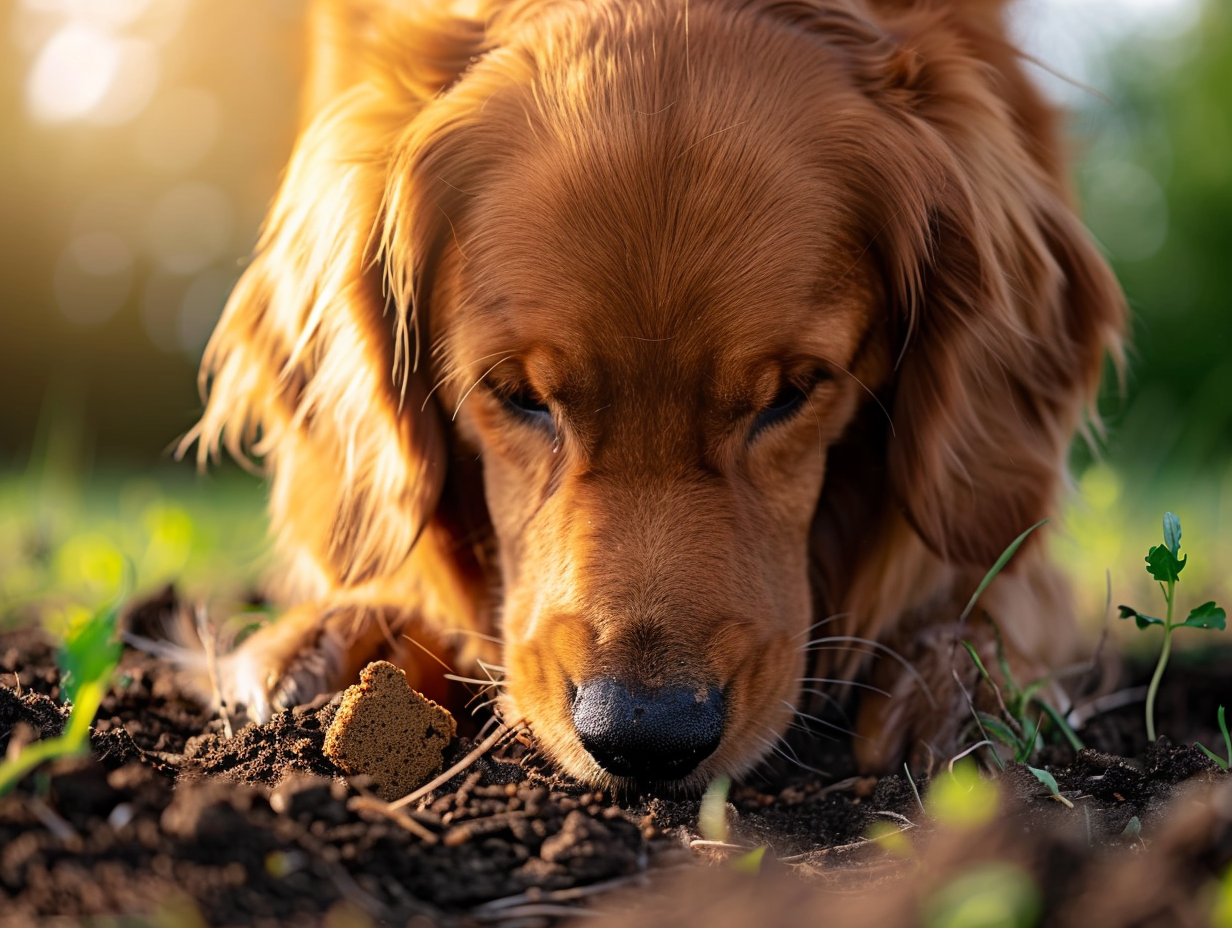
Now, can a dog eat the food they buried? Or will it make them sick?
In general, dogs can eat the food they bury because a bit of dirt shouldn’t cause them any health problems. But you should be cautious of a few things, including:
Burying food can be a typical behavior of dogs; in fact, it’s in line with their instincts. It can also mean they’re not hungry, bored, possessive, or anxious. Ultimately, with some good observation, you are in the best position to understand why they bury their food.
You can take certain precautions, such as feeding them the right amount of food, providing them with enough mental and physical activities, creating a safe environment, spending more time with them, and allocating an area to dig and bury things. But if the problem is getting out of hand, consider consulting with an animal behaviorist to understand how to manage the situation.
Let’s answer some frequently asked questions about dog’s behavior and why they like to bury their food:
Burying food can be a part of dogs' natural instincts. Their ancestors used to bury their food to hide it from other potential scavengers and to save it for future periods of scarcity.
However, burying food can indicate your dog is overfed, bored, possessive, or anxious.
If burying food doesn't pose any harm or inconvenience, then you can allow this behavior as it is a way for them to express themselves. However, if the problem gets out of hand, you can consult a veterinarian or an animal behaviorist.
Whatever you do, avoid yelling or punishing them, as it can worsen the situation.
It depends on the various factors: what kind of food they buried (dry can be okay, wet can spoil), how long it has been buried (too long might mean it's spoiled), and where they buried it (avoid if it's in an area with potential contaminants).
Yes, dogs can get sick from eating buried food if it's spoiled, contaminated, or buried for an extended period. But if the food was recently buried, dry, and in a safe place like your backyard, it might be safe for your dog.